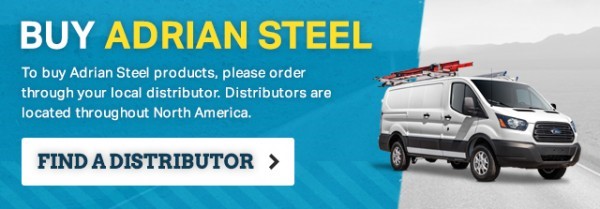The statistics are staggering: In 2018, nearly 3,000 people were killed, and hundreds of thousands were injured in motor vehicle crashes involving distracted drivers. Not only that, at any given daylight moment across America, approximately 660,000 drivers are using cell phones or manipulating electronic devices while driving; a number that has held steady for over a decade.
If you think the vast majority of distracted drivers are teens using cell phones, think again! Yes, teens and cell phones have contributed to these alarming numbers, but so have fleet drivers. One study, which compared 700 active government fleet drivers who were involved in one or more collisions to fleet drivers who were never involved in collisions, showed them to be:
- 17 times more likely to be distracted
- 7 times more likely to be using other communication devices such as CB radios, two-way walkie-talkies, and Nextel/chirp devices
- 73 times more likely to use handheld cell phones
- 91 times more likely to be eating and/or drinking
As you can see, cell phone use is only part of the distracted driving problem. Researchers have broken down driver distractions into three primary categories:
Cognitive distraction
Cognitive distraction happens when a driver’s mind isn’t focused on driving. Talking to another passenger or being preoccupied with personal, family, or work-related issues are some examples. Even drivers listening to their favorite podcast or radio station are at risk; the audio can take drivers focus away from their driving and overall surroundings.
One of the most common cognitive distractions on the road involves talking on the phone. For contractors, it’s hard to avoid – especially if you’re running tight on time. Trying to make up time lost by handling your business calls on the road after a lengthy time loading up or unloading your vehicle can be avoided with smart upfits that keep your equipment organized.
Visual distraction
Visual distraction occurs when a driver looks at anything other than the road ahead. Electronic devices for the car, such as GPS devices and portable DVDs/digital entertainment systems, also distract drivers. This can also occur when events happen around you when driving. Bad drivers, accidents, or unusual occurrences on the side of the road can all be easy distractions.
When you’re visually distracted, you’re momentarily driving blind. Even if it’s just for a second or two, keep in mind that everything on the road happens fast. Cars can pull out in front of you or brake hard in those same seconds. And even if nothing has happened from being distracted yet, it only takes one incident to put a major dent in your business’s success.
Manual distraction
Manual distraction involves the driver taking one or both hands off the wheel for any reason. Some common examples include eating and drinking in the car, adjusting the GPS, or trying to get something from a purse, wallet, or briefcase.
Note: Texting and driving is particularly dangerous because it involves all 3 forms.
What are some ways of reducing fleet driver distraction? Start by using the following tips every time they get in the driver’s seat.
10 Ways of Reducing Fleet Driver Distraction
- Do your due diligence. Check the vehicle before each trip to make sure it’s safe to operate. Check your tire pressure and run a quick test of your lights, brake lights, blinkers before hitting the road.
- Be street wise. Invest more time planning the trip beforehand and know the best way to get to your destination to avoid having to make split-second decisions. That means preprogram your GPS before you leave. Check with online sites to find out road conditions, construction zones, and traffic issues before you leave.
- Know your limits. How many hours can you realistically drive before you start to become unsafe behind the wheel? If it’s a long journey, plan for stops along the way or use the buddy system.
- Turn off or put away your cell phone. If you need to be reachable at all times, get a hands-free device to use only in case of emergency. Why only in emergencies? Because studies have shown that hands-free devices prove just as distracting as normal cell phone use while driving. If you must text, pull over.
- Eat, then run. Tight schedules often mean eating meals when and where you can. But if you eat or drink while driving, your chances of getting in an accident dramatically increase. Save the meal or snack until you get to your destination, or eat it before you leave.
- Thanks for not smoking. Some say a cigarette calms them down on the drive, but it’s one more distraction that can lead to a crash. Don’t smoke behind the wheel – save it for later.
- Get enough rest. When you don’t get enough rest, it’s difficult to focus on the job at hand. If the job at hand is driving, it’s downright dangerous. If you know you’re going to be on the road, make sure you get adequate sleep beforehand. If you’re tired while driving, stop for caffeinated beverage or a short (20 minute) nap.
- Don’t drive angry. A study from researchers at Virginia Tech Transportation Institute finds that drivers increase their crash risk nearly tenfold when they get behind the wheel while observably angry, sad, crying, or emotionally agitated.
- Organize and secure your cargo. Fleet drivers usually carry a full load of equipment and supplies, and those can be a dangerous distraction if they’re unsecured and rolling around.
- Add a partition. One way to minimize sound-induced distraction is to seal off your cargo area from the rest of the vehicle. Consider upfitting your vehicle with an Adrian Steel composite partition to rattling noise coming from the cargo area. It can make for a much safer, more comfortable ride.
The True Costs of an Accident for Business Owners
The most important thing to understand with accidents is that they’re much more significant than just the accident itself. First and foremost, the potential for injury or death to you or others is a serious risk for any type of distracted driving. For that reason alone, it’s critical to always remember your responsibility to safety when you’re on the road!
However, beyond that, you should also think about accidents from the perspective of your business. What does an accident really cost?
First, there’s the cost of repairs. This can range from a few hundred dollars in extremely minor incidents to thousands of dollars in direct costs and increased insurance premiums. If someone brings a civil suit against your business, this could exponentially increase.
And then there are indirect costs. For a fleet, a lost vehicle means lowered efficiency. For someone who runs their own business, that means you can’t work at all. It’s estimated that for every single dollar of direct cost from an accident, you lose three to four additional dollars in indirect costs.
Even if you weren’t injured, and your vehicle is operable, you’ll lose time spent dealing with the paperwork of the incident. It’s also likely that your business may suffer some type of negative attention in your community, especially if you were at fault.
At the end of the whole process, a minor accident could end up costing your business one hundred thousand dollars or more, even if the direct costs were just your insurance deductible and some increased premiums.
Get Your Cargo Van Accessories today!
To learn more about Adrian Steel’s cargo van accessories, give us a call at (800) 677-2726, or find an Adrian Steel distributor in your area.
Connect on Social Media


